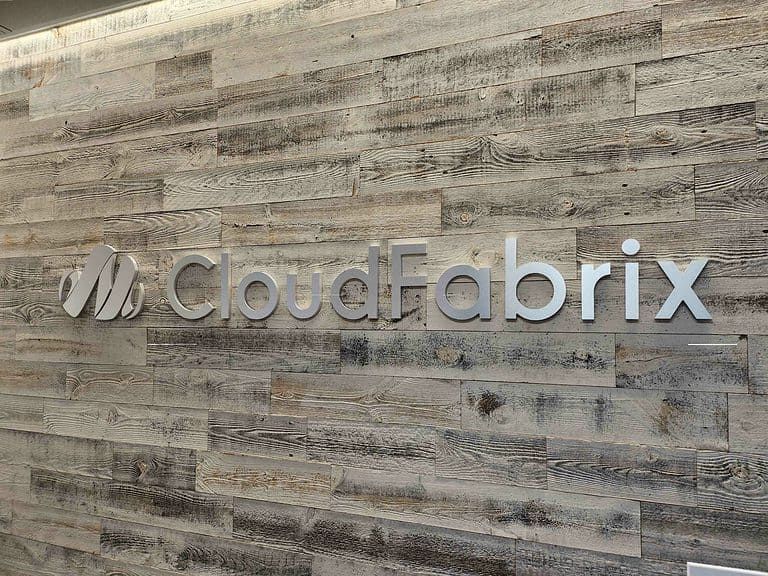At CloudFabrix, everything starts with the so-called Robotic Data Automation Fabric (or Platform). This term might suggest that the founders of CloudFabrix just pulled together some trendy terms and put them together. However, there is a very solid vision behind it. We visited CloudFabrix in the U.S. to hear more about it.
The founders of CloudFabrix, which has been around since 2015, are what you would call serial entrepreneurs. CloudFabrix is already the fourth company they have founded with a regular team of core engineers. The previous three start-ups were all sold to Cisco. The last one, Cloupia, many will know by now as Cisco Intersight. This seems to suggest that CloudFabrix gets funding from Cisco, but that is not the case. The founders themselves come from Cisco, so are undoubtedly high on lists there for new acquisitions. And since Cisco does a lot of acquisitions, the companies of the people who have now founded CloudFabrix will regularly come up in Cisco’s M&A department.
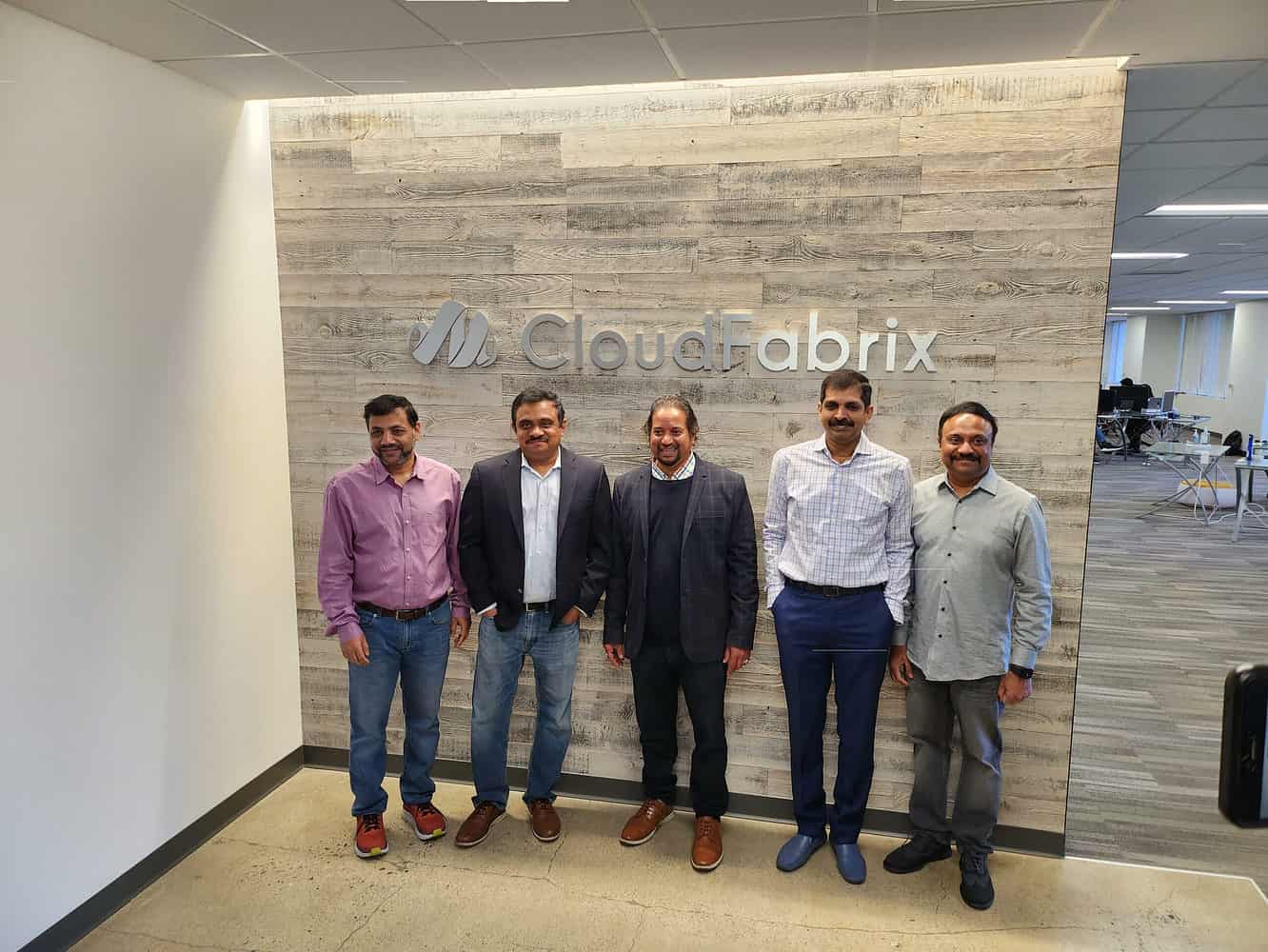
For CloudFabrix, the founders we speak to when we visit the company’s office seem to have different plans than for their previous companies. For those, they never went for investment from venture capital. However, for CloudFabrix, that is exactly what they intend to do. They plan to raise a Series B round. This may indicate that they actually want to build out this company and are not necessarily looking for an exit in the form of an acquisition anytime soon.
Full-stack observability
CloudFabrix’s vision can be summed up succinctly. The company wants to offer full-stack observability. That hasn’t gotten any easier recently. Hybrid or multi-cloud causes more and more tools to be used. In addition, observability is typically lacking. That’s because environments are too complex these days. Shailesh Manjrekar, the CMO of CloudFabrix who updates us on the company, calls this going from a static to a dynamic zero trust data center.
Looking at operational domains within organizations, it’s about Observability, Security and Automation. Those are often silos with a corresponding approach in terms of operations. CloudFabrix wants to put an end to that by working according to the AIOps model. According to Manjrekar, this makes it possible to bring these three domains together. This logically gives you as an organization more insight into how the organization is doing. At least in theory, you have fewer gaps because everything is now part of something bigger. A single source of truth, if you will.
Robotic Data Automation Fabric
The starting point for CloudFabrix is data. After all, that is part of all domains within an organization. As various other companies have done, CloudFabrix built a fabric on top of that data. However, it is not a fabric like the ones you might know from NetApp or Appian. It is what the company calls a Robotic Data Automation Fabric. This is not just a collection of buzzwords, as is clear from the fact that CloudFabrix has applied for a patent on this fabric. The Robotic Data Automation Platform developed on this basis is at the heart of everything CloudFabrix does. This runs in Kubernetes and you can run it on-prem, hybrid (where its data and logs remain on-prem) or completely in AWS. The platform runs in any Kubernetes environment. You can also run it in Docker if you don’t have a cluster to manage.
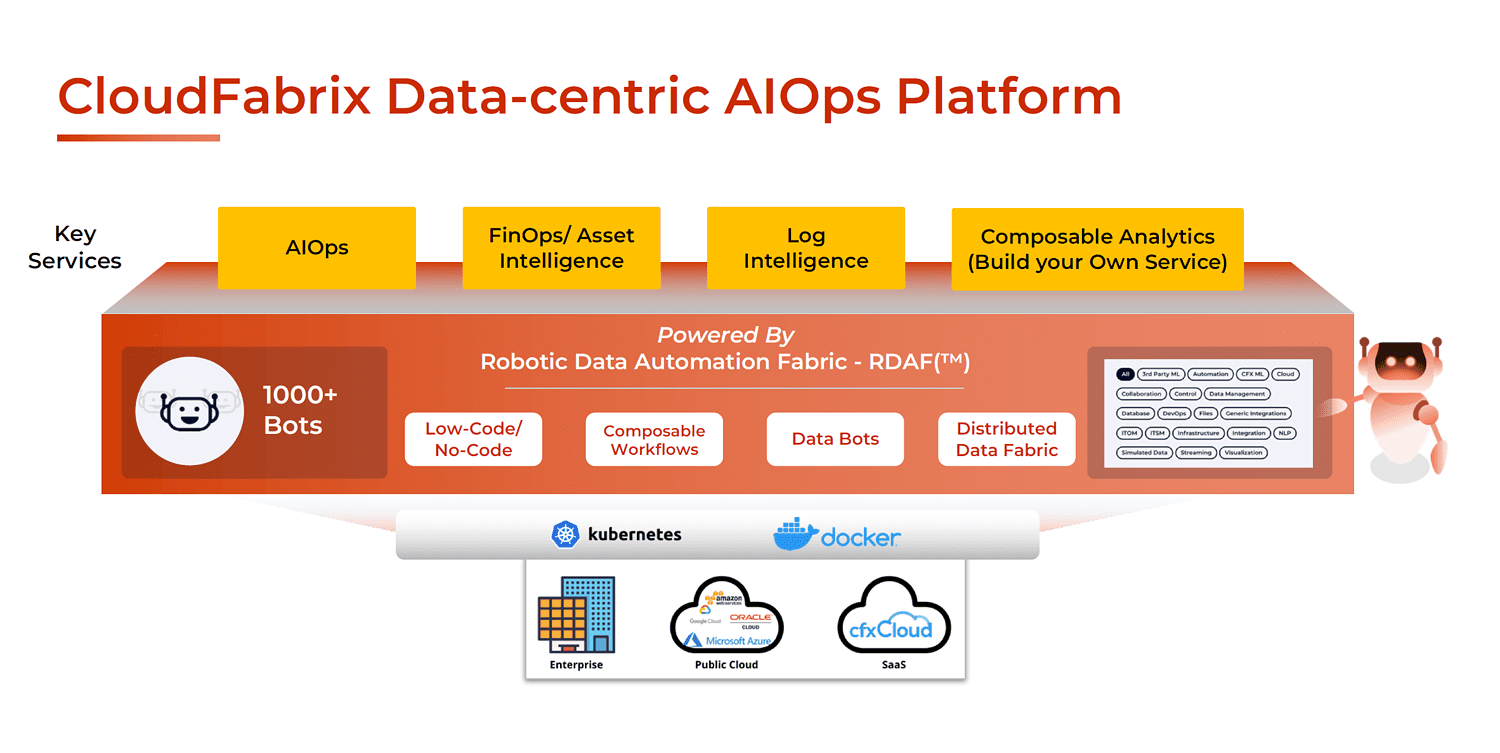
The Robotic Data Automation Fabric spans silos like any other fabric. It has to make sure everything is linked together. It does this using robots and automation. The robots are basically similar to those you may know from RPA. Only here they are not working on processes, but on linking together tools and environments that have something to do with operations. These robots make the API calls between the components.
Within automation, the ability to automate service mapping is particularly striking. In other environments, this is often done on the basis of a CMDB. However, a CMDB is often incomplete or otherwise insufficient to ensure that everything is correct. One benefit of this automated approach is that AIOps now no longer takes ages to set up. According to Manjrekar, they can now accomplish a PoC in a matter of weeks.
It is also interesting to note that you can basically get started fairly easily with the platform on which Robotic Data Automation Fabric is based. In fact, you build the processes using low-code/no-code. For example, there are more than 1,000 bots in there for all kinds of standard actions. There are bots for the different services of AWS that you use, but also one specifically for AppDynamics. With that, you build what you want in a short time. CloudFabrix calls this an Observability Pipeline.
Services on top of the platform
As mentioned before, the Robotic Automation Fabric and Platform is the foundation of CloudFabrix’s offering. On top of this, the company offers various services. AIOps is one of them, but you can also use FinOps. This allows you to properly gather and analyze information about your assets, as well as pull up licensing information and contract details, among other things.
Two other services are Log Intelligence and Composable Analytics. Especially Composable Analytics is an interesting service as far as we are concerned. This is the front-end of what CloudFabrix offers. It allows you to create dashboards for all the different personas within organizations. For C-level you can keep it very global, for someone who really needs to know what the specific problem is in a particular pipeline, there is much more detail available.
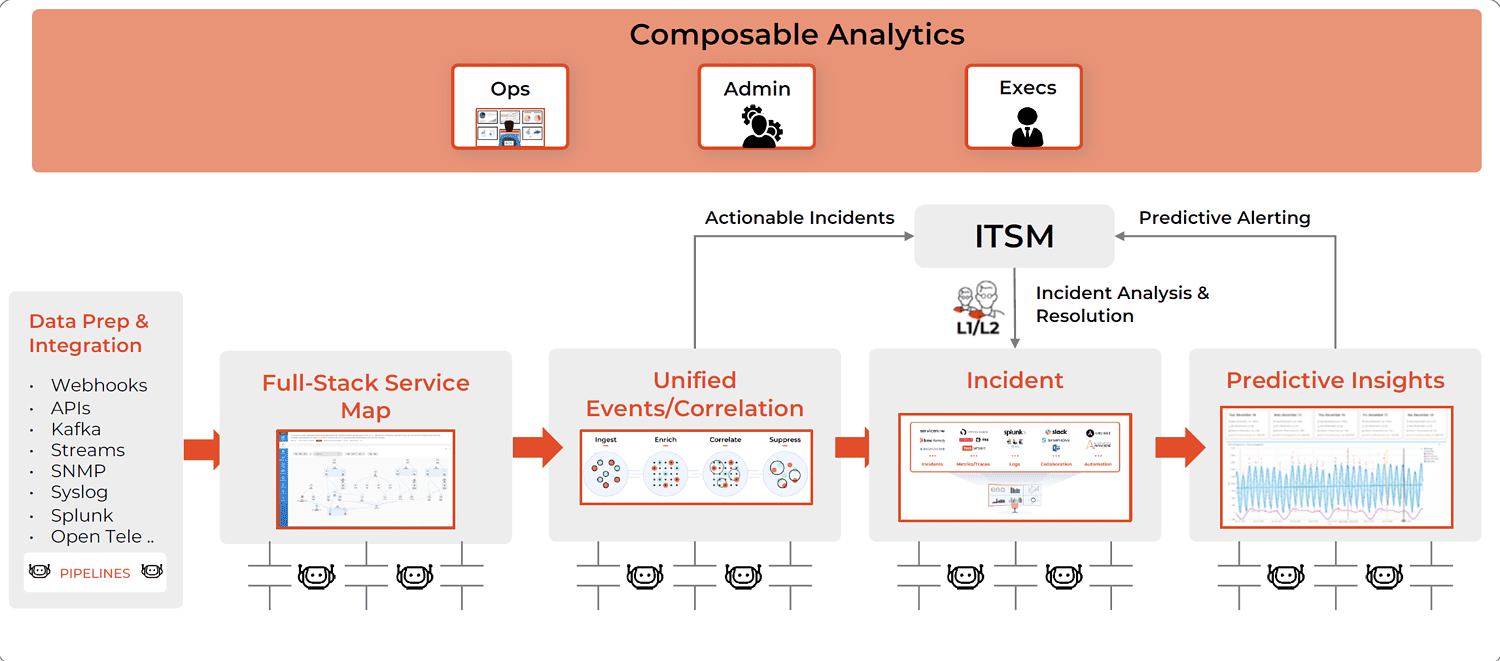
Ultimately, CloudFabrix is all about observability. Taking action on what comes out of this is basically not part of the platform. You do get suggestions on how to solve problems in the configuration of specific pipelines. Think of issues within your own infrastructure, an overloaded database for example. Furthermore, you can also detect the behavior of ransomware with CloudFabrix’s platform. You solve the problem in other tools.
Those other tools bring us to the last part of CloudFabrix’s platform. You can connect it to all kinds of other environments. You can think of SIEM environments, data warehouses, but also ServiceNow for ITSM. Via a connection with Slack, Teams and other chat platforms it is possible to share alerts with other teams in the organization. Furthermore, you can link it with many more environments via an API.
Will CloudFabrix deliver?
At CloudFabrix, they feel they have a winner with the Robotic Data Automation Platform. It claims to solve the problems that other AIOps companies in the market cannot solve. In doing so, Manjrekar mentions big names such as ServiceNow and Splunk, in addition to equally well-known names such as Dynatrace and Datadog. All of those tools lack features that CloudFabrix does offer. One might not be able to pull data in as well CloudFabrix can, the other cannot create dashboards.
Comparions by companies of their own products with competing products are always a bit skewed. So it remains to be seen what an organization notices of the differences. For example, the fact that you can’t create dashboards in Splunk will be much more important to some organizations than others. Just because you can do a lot as a platform doesn’t mean that everyone wants it. On the other hand, it is never wrong to have many features, as long as they are user-friendly to deploy.
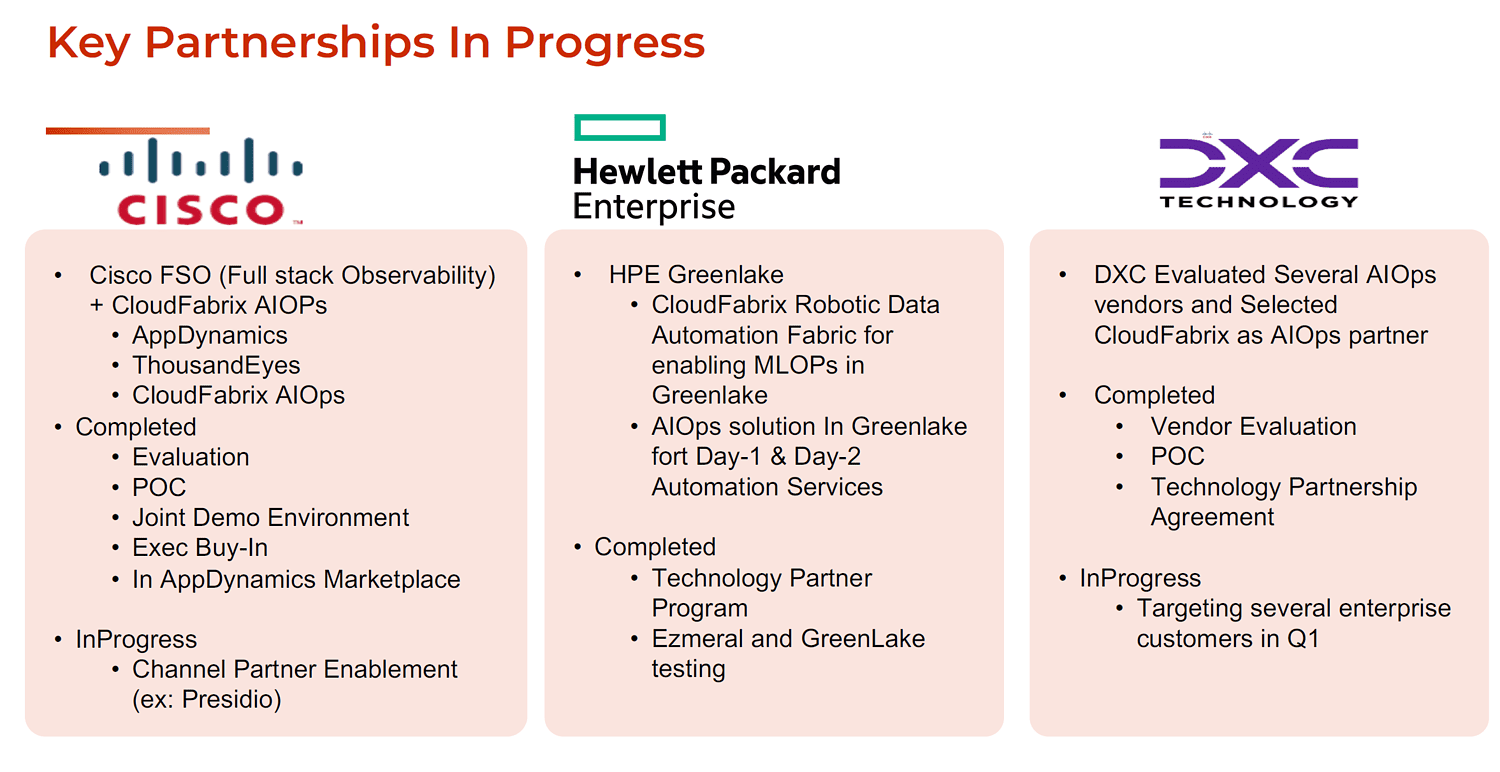
For now, things look excellent for CloudFabrix. It has partnerships with IBM Consulting, DXC Technology, Cisco and HPE (specifically the Ezmeral division). That indicates that those companies see potential in the platform. The problems lately around raising capital could through a spanner in the works for CloudFabrix. Raising capital has been rather hard lately, so the company may have its work cut out with the planned investment round. It would be nice if they succeed, as we would like to see if CloudFabrix will live up to the potential it undeniably has.
